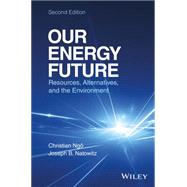Presents an overview on the different aspects of the energy value chain and discusses the issues that future energy is facing
This book covers energy and the energy policy choices which face society. The book presents easy-to-grasp information and analysis, and includes statistical data for energy production, consumption and simple formulas. Among the aspects considered are: science, technology, economics and the impact on health and the environment. In this new edition two new chapters have been added: The first new chapter deals with unconventional fossil fuels, a resource which has become very important from the economical point of view, especially in the United States. The second new chapter presents the applications of nanotechnology in the energy domain.
- Provides a global vision of available and potential energy sources
- Discusses advantages and drawbacks to help prepare current and future generations to use energy differently
- Includes new chapters covering unconventional fossil fuels and nanotechnology as new energy








